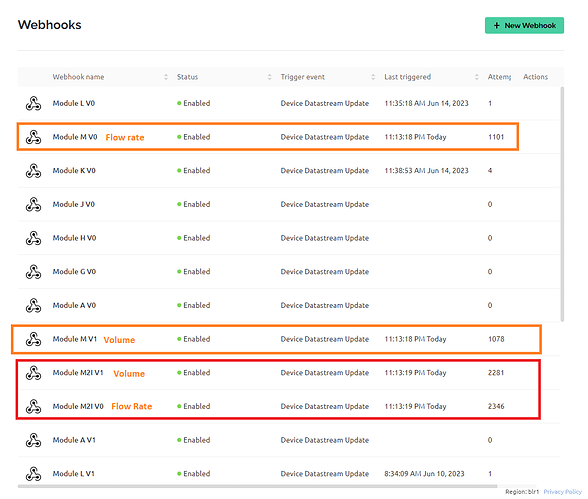Dear Blynk Team,
I hope this message finds you in good spirits. I am writing to bring to your esteemed attention an issue we have encountered regarding the transfer of parameters from the Blynk platform to AWS using webhooks (Webhooks triggers AWS Lambda service) and lambda services, as per your guidance.
At present, we have 13 devices deployed in the field, and each device is diligently sending three parameters to the Blynk platform: flow rate, volume, and solenoid status. Our aim is to seamlessly transfer these vital parameters to AWS for further analysis and processing. Regrettably, we have observed occasional instances where Blynk fails to trigger the associated webhook, thereby resulting in the failure to invoke the corresponding lambda function.
To facilitate a comprehensive understanding of the matter at hand, I have taken the liberty of attaching some screenshots for your perusal. In the provided webhook screenshot, kindly take note of the following details:
Module M2I V0 signifies the flow rate data of Module M2I.
Module M21 V1 signifies the volume data of Module M2I.
Module M V0 signifies the flow rate data of Module M2I.
Module M V1 signifies the volume data of Module M2I.
Upon scrutiny, it becomes evident that there exists a discrepancy in the (webhook) attempt counts (The counts should be same as both parameters are sent by device at same instant), indicating that not every webhook trigger is being successfully initiated. However, it is important to emphasize that our devices in the field consistently transmit the data as expected (We can see it on blynk dashboard every minute).
Given the significance of this issue, as it directly impacts the inclusion of critical device parameters on the AWS side, we humbly beseech your valued assistance in promptly resolving this matter.
We are using plus plan & we hope this issue is not because of it.
We wholeheartedly appreciate your attention and eagerly await your esteemed response.
Thank you for your unwavering cooperation.
